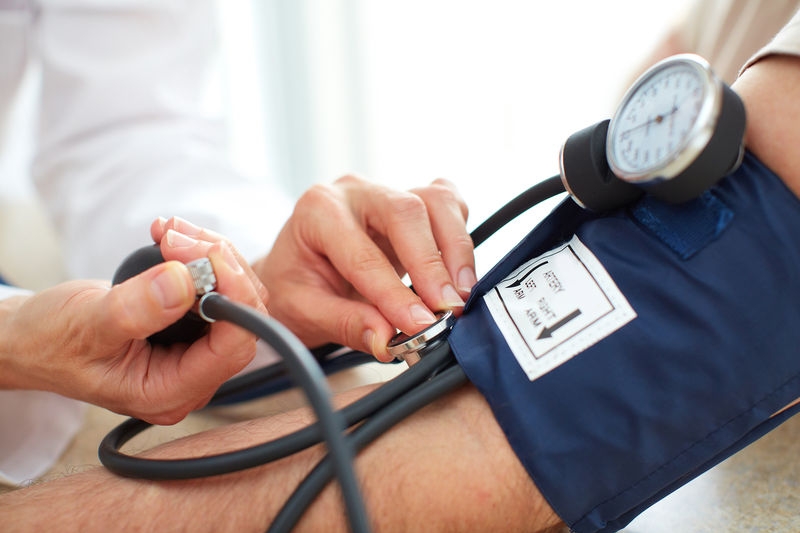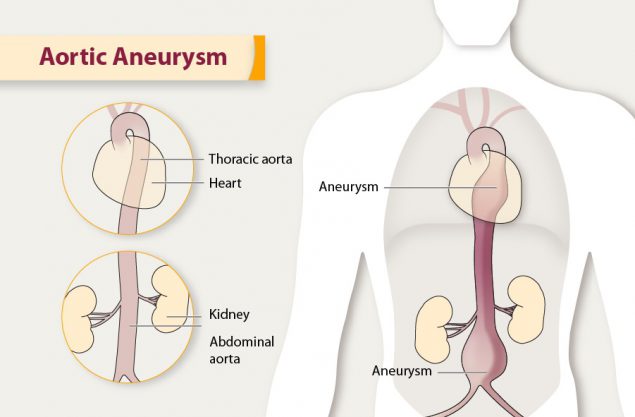
Click here to read this article in Marathi: आरोग्याची गुरुकिल्ली-स्क्रीनिंग टेस्ट्स
“Prevention is better than cure”. It means, it is easier to stop something happening than to repair the damage after it has happened. How can we prevent the diseases and be healthy? We all know about vaccines. We take vaccines to get protection from certain infectious diseases and some cancers. Similarly, there are some screening tests to catch the disease before it affects you. If you have a close relative with a chronic disease, such as heart disease, stroke, diabetes, or cancer, then you could have an increased risk for developing that disease. In some diseases, person does not develop symptoms until the disease progresses into severe stage. How can you address it? You can get screening tests done.
What does screening test mean? Screenings are tests that look for diseases before you have symptoms. Some examples of screening test can be mammogram, Pap Smear, blood tests, colonoscopy, DEXA Scan. At the end of your evaluation, the doctor will look at these tests and recommend medications, diets, or behavioral modifications to help you stay healthy and avoid developing disease such as heart disease, diabetes, cardiac problems, and so many more. Some behavioral modification can include exercising more, changing your diet, or using screening tests to help detect disease early.
Health screenings are important for people of all ages. The screening tests are age-specific and some tests are done every year while others are not. There are no screening guidelines for every cancer.
Many countries have the specific screening recommendations while some countries do not have any. In USA, there are some variations depending on which state you are in. Via this article, I want to help you understand why and when these tests are done. This is not a medical advice. You should talk to your doctor and decide which screening tests you need.
The following recommendations are based on the combined guidelines from the U.S. Preventive Services Task Force (USPSTF) and Centers for Disease Control and Prevention (CDC).
1. History and physical exam: A physical check-up should be performed every 1-2 years for ages 19-49 and every year for ages 50 and older.
2. Regular Weight, Height and BMI: Body mass index (BMI) is a person’s weight in kilograms divided by the square of height in meters. It should be checked annually. Being underweight or overweight is not good. For children and teens, BMI is age- and sex-specific and is often referred to as BMI-for-age. For adults, BMI (body mass index) should be between 18.5 to 25. If BMI is between 25-30 (overweight) and more than 30 (obesity), following blood tests should be done:
- Lipid profile
- HbA1C
- Fasting glucose and
- LFT (Liver Function Tests)
You can calculate your BMI here: Adult BMI Calculator

3. Blood Pressure screening: Blood pressure should be measured at each visit beginning at age 18. The USPSTF recommends annual screening for adults aged 40 years or older and for those who are at increased risk for high blood pressure. A normal blood pressure level is less than 120/80 mmHg. The first number (120) is called systolic and the second number (80) is called diastolic blood pressure.

Persons at increased risk include those:
- Who have elevated blood pressure (120/80 to 129/84 mm Hg)
- Who are overweight or obese
- African Americans
Adults aged 18 to 39 years with blood pressure <120/80 mm Hg, who do not have other risk factors should be re screened every 2 years.
4. Lipid profile: means cholesterol test. It is done by simple blood draw. You may need to fast (not eat or drink) for 8 to 12 hours before your cholesterol test. This test checks your levels of:
- Low-density lipoprotein (LDL) or “bad” cholesterol. Having high levels of LDL cholesterol can lead to plaque buildup in your arteries and result in heart disease or stroke.
- High-density lipoprotein (HDL) or “good” cholesterol. HDL is known as “good” cholesterol because high levels can lower your risk of heart disease and stroke.
- Triglycerides, a type of fat in your blood that your body uses for energy. The combination of high levels of triglycerides with low HDL cholesterol or high LDL cholesterol levels can increase your risk for heart attack and stroke.
- Total cholesterol, the total amount of cholesterol in your blood based on your HDL, LDL, and triglycerides numbers.

Children and adolescents should have their cholesterol checked at least once between ages 9 and 11 and again between ages 17 and 21.
Most healthy adults should have their cholesterol checked every 4 to 6 years.
People who have heart disease or diabetes or who have a family history of high cholesterol, need to get their cholesterol checked more often (at least once a year).
5. Folic acid: CDC urges all women of reproductive age who could become pregnant to take 0.4 mg (400 micrograms (mcg) of folic acid each day, in addition to consuming food with folate from a varied diet, to help prevent some major birth defects of the baby’s brain (anencephaly) and spine/spinal cord (spina bifida). The following image shows how horrible the consequences of folic acid deficiency. Sorry for the scary image.

This is important as half of pregnancies are unplanned and major birth defects of baby’s brain or spine occur by 3-4 weeks of pregnancy, which means before the woman knows she is pregnant. It is difficult to get 400 mcg daily through diet, so supplementation is required.
6. Diabetes Type 2: Screening for type 1 diabetes is not recommended. The USPSTF recommends all individuals 45 years and older should be screened every three years if results are normal. But, the American Diabetes Association recommends screening for type 2 diabetes annually in 45 years older people.
The diagnosis can be made with:
- A fasting plasma glucose level of 126 mg/dL or greater
- An HbA1C level of 6.5% or greater
- A random plasma glucose level of 200 mg/dL or greater
- Testing should be considered in all who are overweight (BMI≥25)
- 1st degree relative with diabetes
- Physically inactive
- Hypertension (>140/90) or taking medication for hypertension
- PCOS (polycystic ovary syndrome)
- Plasma high-density lipoprotein cholesterol level <35 mg/dl or triglyceride level >250 mg/dl
- History of CVD (Cardiovascular disease)
- History of gestational diabetes mellitus or delivery of a baby weighing > 9 lb (4.1 kg)
7. Mammogram: A mammogram is an X-ray picture of the breast. Doctors use mammogram to look for early signs of breast cancer. Regular mammograms are the best tests to find breast cancer early, sometimes up to three years before it can be felt.
Different places have different recommendations for mammogram. But yearly mammogram starting at the age of 40 is the best thing to do. If it is abnormal, woman needs follow-up tests to check if there is a cancer or not.
8. Cervical Cancer Screening/ Pap Smear: Pap test or pap smear is a procedure to test for cervical cancer in women. Cervix is the opening of the uterus or womb. Sample of cells are collected from cervix by using a small brush. Pap tests can find cervical cancer early, when the chance of being cured is very high. Cervical cancer screening should begin at age 21 years (regardless of sexual history). Screening before age 21 should be avoided because women less than 21 years old are at very low risk of cancer. If test is normal, you can wait three years until your next Pap test. If you are older than 65 years, you may not need the test.
9. Colo-rectal Cancer Screening: Colon or large intestine is a tube like organ that removes water from digested food. The solid waste called stool moves to rectum and leaves the body. Colorectal cancer affects men and women. It is the second leading cancer killer in USA. Screening helps find polyps (abnormal growths), so that they can be removed before they turn into cancer. Screening should begin at age 50. It can be done in three different ways:
- Screening Colonoscopy- every 10 years
- Flexible Sigmoidoscopy- every 5 years
- High Sensitivity Stool Occult Blood Testing- every year
10. Bone Mineral Density Screening (DXA)/Osteoporosis Screening: DXA/DEXA or bone densitometry is a form of X-ray technology to measure bone loss. It is used to diagnose osteoporosis (weak and brittle bones).
- Screen for women 65 years and older. Recommended only once every two years.
- Screen for postmenopausal women younger than 65 years who are at increased risk of osteoporosis.
11. Abdominal Aortic Aneurysm (AAA): One-time screening for abdominal aortic aneurysm (AAA) with ultrasonography in men aged 65 to 75 years who have ever smoked is recommended. An aortic aneurysm is a balloon-like bulge in the aorta, the large artery that carries blood from the heart through the chest and trunk. The aneurysm can burst completely, causing bleeding inside the body. This is called a rupture. It can lead to death.

Take home message: By investing an hour or two in knowing and understanding the available screening tests, and when to get them done, you may be able to add years to your life! Use your birthday as a reminder to get them done.

Along with the screening tests, adopt the healthy lifestyle as mentioned below and stay healthy and happy 🙂
Adopt healthy lifestyle by considering following aspects:
- Up to date with immunizations
- Dietary guidelines (A Mindful Diet)
- Physical activity recommendations (Dare to Be Fit)
- Moderation of alcohol use and smoking
- Seat belt use
- Appropriate protective/safety measures for biking, skating, skiing
- Smoke and carbon monoxide detectors
- Do not ignore mental disorders like depression, anxiety etc. (Brain Power Matters)
References:
- https://www.uspreventiveservicestaskforce.org/uspstf/recommendation-topics/uspstf-and-b-recommendations
- https://www.cdc.gov/family/checkuplist/index.htm
- https://www.cdc.gov/diabetes/basics/getting-tested.html


Doctor you have done it again! I am diabetic and just reading the information, showed me that I could have prevented or minimize this disease rather than thinking and saying that it is hereditary. I have experienced some of the tests and they were displayed just as I experienced. Thankfully, I am on target wIth my follow up visits. Thanks again for sharing!
Thank you very much!
How simple and clear and good explanation Savitra..you are true dedicated doctor and serving our nation.proud of you..
Thank you, dear 🙂
As usual… Short n sweet… Explanation…
Good information..
Very useful to all…
Thanks for sharing
🙏🙏🙏
Thank you.
Very nice and useful information 👌👌👌 thanks for sharing 🙏🙏
Thank you.